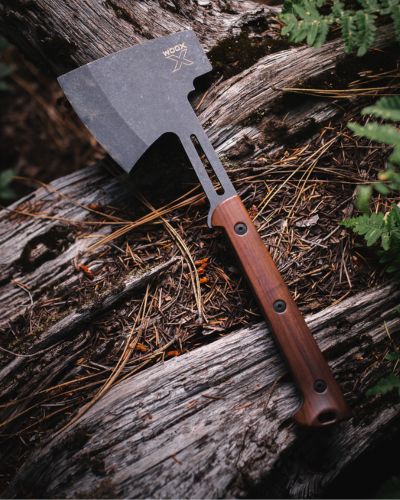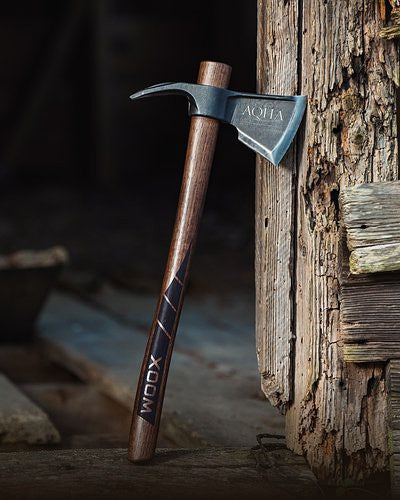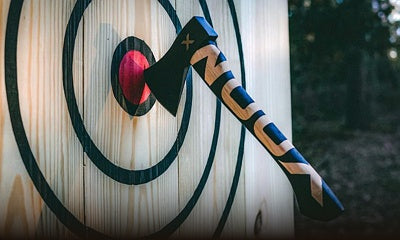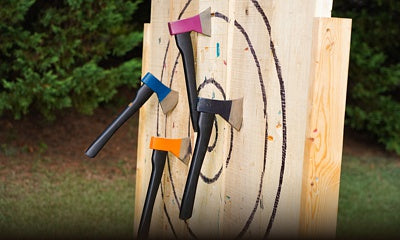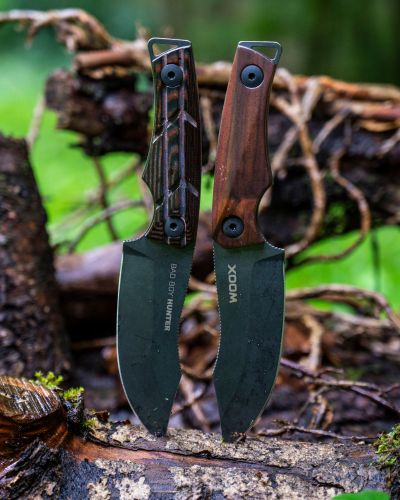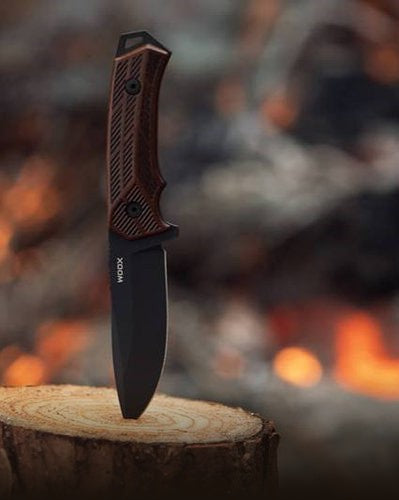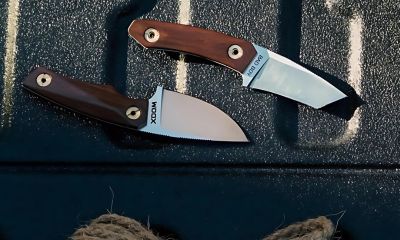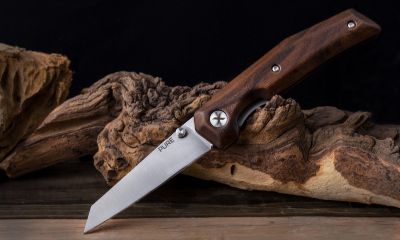
WHAT TO LOOK FOR WHEN SHOPPING FOR AN AXE
An axe is a tool that many woodsmen simply won’t leave behind. It has a thousand uses, and if you live in a temperate hardwood forest it’s pretty much indispensable. With the importance of the axe, it’s important that you are careful when you pick the axe you’re taking with you on your woodland adventure.
Anatomy of an Axe

There are many parts of an axe from poll to palm swell and bit to butt. In the Picture how each part of an axe is called.
• Blade: The blade is the cutting edge of the ax, and is made of a strong and durable material such as steel, stainless steel, or carbon steel. The blade is attached to the handle of the ax.
• Handle/Haft: The haft is the handle of the ax, and is made of a material such as wood, plastic, or fiberglass. The handle should be comfortable to hold and grip, and may have features such as a non-slip surface or a wrist guard.
• Head: The head is the top part of the ax, which includes the blade and the haft. The head is typically made of a single piece of metal, with the blade and haft attached to it.
• Poll: The poll is the back of the head, opposite the blade. The poll is used for tasks such as driving nails or wedges, or for striking the blade with a mallet.
• Eye: The eye is the hole at the top of the haft, through which the blade is attached to the haft.
• Bit: The bit is the cutting edge of the blade. It is the part of the blade that comes into contact with the material being cut.
• Bevel: The bevel is the angled surface on the blade that forms the cutting edge. The bevel may be straight or curved, depending on the type of ax and the task it is used for.
• Toe: The toe is the point at the bottom of the blade, opposite the bit. The toe is used for tasks such as shaping wood or carving.
• Heel: The heel is the back of the blade, opposite the bit. The heel is used for tasks such as splitting wood or driving wedges.
THE HEAD STEEL
Possibly the most crucial thing about the axe’s head is what it’s made from. The steel that forms the head will determine how sharp you can make it, how durable the edge will be, how often you need to sharpen it, and if the poll is useful. Some axes (usually the cheaper ones made in China) are made from a lower carbon alloy that is easy to sharpen but doesn’t hold that edge well at all.
There are a few different types of steel that are commonly used in the production of axes, and the best one for you will depend on your specific needs and preferences. Here are a few of the most popular options:
• Carbon steel: Carbon steel is a common choice for axes because it is strong, durable, and easy to sharpen. It can hold a sharp edge for a long time, but it is also prone to rust if not properly cared for.
• Stainless steel: Stainless steel is a good choice for axes that will be used in wet or humid environments, as it is resistant to rust and corrosion. It is also relatively easy to sharpen, but it may not hold an edge as well as carbon steel.
• High carbon steel: High carbon steel is a more specialized type of steel that is known for its ability to hold a very sharp edge. It is more difficult to sharpen than other types of steel, but it is also less prone to chipping and breaking.
THE HEAD SHAPE
One of the first thing you need to think about when you pick your axe is its head. Axes come in single and double bit (the edge of the axe is called the bit) configurations. Both styles have their uses, but for purposes of this article we will assume that you’ve chosen a single bitted axe.
The next thing to consider is the shape of the head. Some axes have heads which are specialized to perform one task, like a broad axe (which is used to hew beams and planks) or a splitting maul (which is used to split firewood).
Different Types of Axe Heads
There are several common shapes for axe heads:
• Camping axe: This is a small, lightweight axe with a short handle and a narrow, curved blade that is good for chopping small branches and kindling.
• Splitting axe: This is a heavy axe with a long handle and a wide, flat blade that is designed for splitting logs into smaller pieces. This is an axe with a long handle and a thin, sharp blade that is used for cutting down trees.
• Double-bit axe: This is a larger axe with two blades, one on either side of the handle. It is used for felling trees and can also be used for limbing and bucking logs.
• Tomahawk: This is a small, lightweight axe with a short handle and a narrow, pointed blade that is traditionally used by Native Americans for hunting and warfare. It is also popular for use in outdoor activities such as camping and bushcraft.
• Bushcraft axe: compact, sturdy multipurpose tool. Ideal to cover in a proper way a wide spectrum of bushcraft and survival tasks in the wood.
• Throwing axe: This is a small, lightweight axe with a balanced handle and a sharp blade that is designed for throwing at a target (learn more about axe throwing)
Camping axe head shape

Splitting axe head shape

Bushcraft axe head shape

Throwing axe head shape

For a general, all-purpose axe you should look for one with a slightly curved bit, which allows the force of the axe to be concentrated in a narrower area, resulting in a deeper bite into the wood.
The edge should be a little thin, but it should swell out as it transitions from the edge to the cheeks (the sides of the axe head between the edge and the handle), and then into the eye (the part the handle goes through).
On the side opposite the edge, your axe’s head should have a sturdy poll (the flat spot) that you can use to pound stakes and other objects. Where the handle emerges from the underside of the head, there should be an undercut that will allow your hand to choke up on the axe head. This allows you to have greater control of the axe during fine carving and cutting tasks.

THE AXE HANDLE
The second thing to consider is the axe’s handle. Axe handles come in many different shapes and sizes, usually dictated by the tool’s intended use. They also come in several different materials. The material as I said, axe handles can be had in a lot of different materials. Wood is the king, but fiberglass, polymer, and steel can also be had. For a general use axe, I highly recommend that you choose a wood handle. I’ll go over the "why" of it in another article here, but for our purposes today, let’s assume that you picked the traditional wooden handle.

Make sure you pick an axe handle whose grain is straight and runs parallel to the length of the handle. If it runs out the side of the handle this creates a weak spot where the handle will be prone to break.
When you look at the ends of the handle, make sure that its growth rings are narrow and close together. This makes for a denser, stronger handle. As far as the wood species goes, Hickory is best, but Ash will work, too.
For the type of axe we’re discussing, a handle length of between 22 and 28 inches is ideal. That’s long enough to be capable of doing heavier work, yet light enough to allow you to maintain control of the axe and help minimize the risk that you’ll hurt yourself with a wild swing.
Your handle should also be somewhat curved for improved control and ergonomics, and the end should have a “knob” that will help keep the axe from slipping away during your swing.

Other KEY FACTORS TO CONSIDER
Balance: The ax should be balanced so that it is easy to handle and control. This can be achieved by adjusting the size and shape of the blade and handle.
Safety: The ax should be designed with safety in mind, with features such as a non-slip grip and a guard to protect the user's hands.
Durability: The ax should be designed to withstand the wear and tear of regular use, with features such as a hard-wearing blade and a sturdy handle
OUR AXES LINE
Now you you are ready to decide on what kind of axe to get. To do that, you need to ask yourself some questions.
• What am I going to do with the axe?
• How much space do I have in my pack?
• What is my skill level?
• How much weight am I willing to carry?
Below you can find WOOX' answer based on the main purpose you have in mind for your next axe.
This article is written by Mike Kreitzer. Mike is Editor of MK Outdoor Journal on YouTube, a Voting Member of the Professional Outdoor Media Association and Media Member of thetNational Shooting Sports Foundation.





